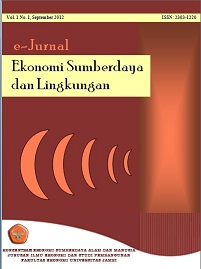Pengolahan pisang aneka rasa dan digital marketing untuk meningkatkan perekonomian Desa Maro Sebo Kecamatan Jambi Luar Kota, Kabupaten Muaro Jambi
DOI:
https://doi.org/10.22437/jels.v10i3.16298Abstract
Indonesian local bananas are among the types favored by consumers because they have a good taste with a fresher aroma compared to imported bananas. However, local Indonesian bananas have a weakness because they have a high water content so that bananas have a relatively short shelf life. Maro Sebo Village is one of the villages located in the Jambi Luar Kota District, in the Muaro Jambi Regency that has the potential for banana commodities. This study offers an innovation in making banana chips with different flavors so that people who like this food don't feel bored because there are many people who like snacks. The achievement target of this activity is a change in mindset so that the efforts carried out by the women's farmer group in Maro Sebo Village are more business-oriented by providing an understanding of how to start a business of various flavors of banana chips so that they become useful products and open access to online-based sales. The results achieved from this activity are the issuance of PIRT (Food Home Industry) permits and changes in behavior, namely increasing the skills of farmer women's groups, young people, changes in business results, changes in income/profits, and changes in efficiency and effectiveness of production management.
Downloads
Downloads
Published
How to Cite
Issue
Section
License
Copyright (c) 2021 Muhammad Ridwansyah, Jaya Kusuma Edi, Fitri Widiastuti

This work is licensed under a Creative Commons Attribution-ShareAlike 4.0 International License.


